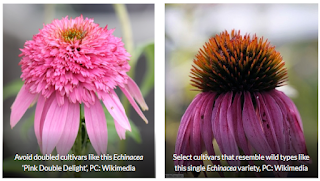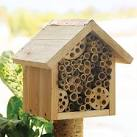Fall is a great time to plant trees. What is the best way to plant them? Whether you plant them yourself, or you use a landscape contractor to plant your trees for you, there are recommended practices you should follow. Improper planting of trees, both in the nursery setting, and in the landscape setting, contribute to more tree deaths than all other factors combined!
Let’s review what are currently the best management practices and minimum standards which should be followed when planting a tree.
First, call 811 before you dig. Your spouse will be extremely unhappy with you if you should cut the internet cable, or worse, hit a gas line. 
Next, look up. Make sure you have vertical clearance for your trees. Avoid planting them under the utility’s right of way.
Once you have done a site analysis to ensure you have selected the right tree for the right place and that you are not going to disrupt any utilities, head to the nursery to buy your plant material.
Here is where it becomes important to know what to look for when purchasing plant material. Look and shop around. Examine plant material carefully. You are making an investment that could add $20,000 or more to the value of your property, treat the experience as you would buying a new car! Check your tree for signs of girdling or circling roots. Make sure the tree is free from broken, rubbing, or damaged branches, and any place where the trunk has been injured. A tree should have good structure with a single trunk. Avoid co-dominant trunks.
The next step is to dig a proper hole. Standards state that the planting hole should be a minimum of 1.5 times the diameter of the root ball. Research from land-grant universities
suggest a saucer shaped planting hole three times the diameter of the root ball. This allows the roots to establish quicker and avoid post planting stress. In our poor soils and arid climate, establishing the root system and minimizing stress factors is extremely important.
Be sure you are planting the tree at the proper depth. As mentioned above, planting trees too deep, either in the nursery setting, or in the landscape setting can lead to circling, and/or girdling roots and eventually, death. Check the depth of roots in the root ball by using a blunt probing instrument, such as a screwdriver. Do not assume it was planted correctly in the nursery! Two to three structural roots should be no deeper than one inch measured four inches out from the trunk of the tree. If roots are deeper than that, you will want to remove soil from the top of the root ball and adjust the depth of the planting hole.
 Handling the tree carefully by the root ball, place the tree in the planting hole with the root ball rising above the soil grade one to two inches on firm, undug soil. Once the tree is in place, remove the burlap and wire baskets from the top third of the root ball. Fabric, paper pulp pots, and containers should carefully be removed.
Handling the tree carefully by the root ball, place the tree in the planting hole with the root ball rising above the soil grade one to two inches on firm, undug soil. Once the tree is in place, remove the burlap and wire baskets from the top third of the root ball. Fabric, paper pulp pots, and containers should carefully be removed.
Once the tree is properly in place, begin backfilling the planting hole. It is not recommended to add amendments to the planting hole as this creates a second container roots to have to grow through to establish. Planting holes should be amended with no more than 10% organic matter. When backfilling, add the soil in small amounts and use water to settle it. Avoid compacting the soil around the roots.
Now you may add mulch. Just avoid mulch volcanoesand don't allow mulch to touch the trunk of the tree. Mulch should be kept a minimum of four inches away from the tree's trunk. Not following this practice allows for disease and decay organisms to rot the trunk of the tree. Mulch should be applied at a depth of four inches. For young trees prone to winter damage, or in areas where animals can cause damage to the tree, consider protecting them. Tree staking is not recommended except in wind prone or high traffic areas.
With this information, you are ready to go out and plant a new tree. Although these steps are an increase in labor, the return on the investment is a higher quality, longer lasting landscape.



 Potted greenhouse mums that we see everywhere this time of year are not bred for their pollen, nectar, or accessibility to pollinators. Most are bred to have multiple petals which reduce accessibility to pollinators. Some good features about these mums is that they are bushy and provide cover for a variety of predators and parasites that naturally keep plant pests under control. Try an old fashioned Mum instead...or Autumn Asters...or Autumn Sedum!
Potted greenhouse mums that we see everywhere this time of year are not bred for their pollen, nectar, or accessibility to pollinators. Most are bred to have multiple petals which reduce accessibility to pollinators. Some good features about these mums is that they are bushy and provide cover for a variety of predators and parasites that naturally keep plant pests under control. Try an old fashioned Mum instead...or Autumn Asters...or Autumn Sedum!











